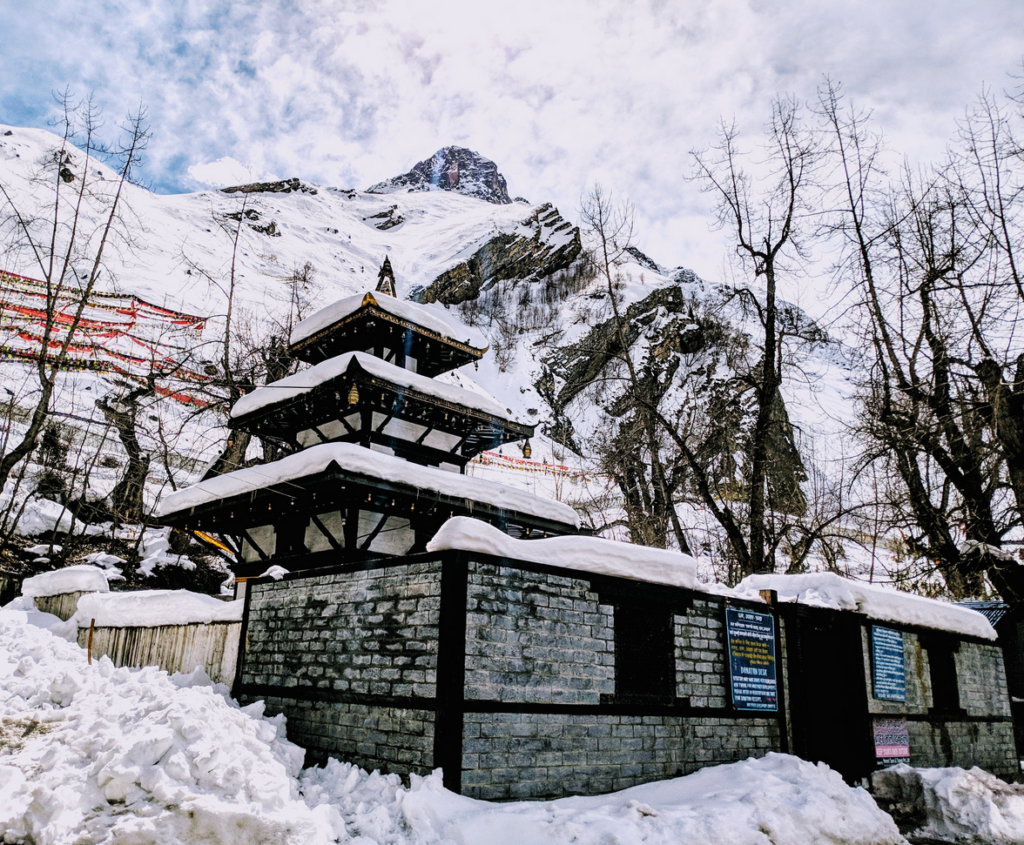MuktiNath Temple, one of Nepal’s most revered pilgrimage destinations, stands as a symbol of spiritual and religious harmony. Known as the temple of salvation, it holds deep significance for both Hindus and Buddhists. It is not just a place of worship but also a destination that embodies cultural, spiritual, and political importance.
Location of MuktiNath Temple

MuktiNath Temple is located in the Mustang district of Nepal, nestled in the foothills of the Himalayas. At an altitude of 3,710 meters, it offers stunning views of snow-capped peaks and the breathtaking Kali Gandaki River. The journey to the temple is as enchanting as the destination itself. Pilgrims and travelers can reach MuktiNath via flights, trekking, or jeep rides. The serene surroundings add to the spiritual experience, making it a must-visit destination for devotees and nature lovers alike.
Spiritual Significance of MuktiNath Temple
MuktiNath, also known as the “Place of Liberation,” is a temple where devotees seek salvation from the cycle of life and death. Hindus believe that visiting this sacred site washes away sins, granting moksha, or liberation. The temple is dedicated to Lord Vishnu and is one of the 108 Divya Desams—holy shrines of Vishnu revered in Hinduism. For Buddhists, MuktiNath is a sacred site associated with Guru Rinpoche (Padmasambhava), who meditated here. The spiritual energy felt here is intense, leaving visitors with a deep sense of peace.

Religious Harmony at MuktiNath
MuktiNath Temple stands as a beacon of religious tolerance and unity. Hindus and Buddhists alike visit the temple to offer prayers and seek blessings. This coexistence is a powerful message of mutual respect between these two great religions. The main deity, Lord Vishnu, is worshiped by Hindus, while Buddhists revere the temple as a symbol of their own spiritual traditions. It is rare to find such a unique blend of religious beliefs in one place, making MuktiNath a true representation of harmony.
Cultural Aspects of MuktiNath
The region surrounding MuktiNath Temple is rich in cultural heritage. The temple architecture is simple yet reflects the local traditions of the Mustang region. During the festival of Rishi Tarpani, thousands of pilgrims gather here, celebrating the occasion with rituals and offerings. The culture of Mustang, with its Tibetan influences, blends seamlessly with the Hindu practices observed at MuktiNath. Local music, food, and art add to the vibrant atmosphere of this spiritual site.

Political Importance of MuktiNath
Beyond its religious and cultural aspects, MuktiNath Temple holds political significance as well. The temple is a symbol of Nepal’s commitment to preserving its religious heritage. It attracts pilgrims from India, Tibet, and beyond, strengthening Nepal’s diplomatic and cultural ties with neighboring countries. The government of Nepal plays an important role in maintaining the temple and promoting it as a key pilgrimage destination, fostering religious tourism and contributing to the country’s economy.
For More Info:
website: www.spiritualtourismnepal.com
mail: info@spiritualtourismnepal.com
WhatsApp: +977-9851154156
Location: Kritipur, Kathmandu, Nepal


